Wearing small climbing shoes has become ingrained into the sport/lifestyle that is climbing. Climbers have been known to size down their climbing shoes unbelievable amounts and brag about it like a badge of honor. But why do they do this? Is it just a trend that stuck around or is there actually a benefit to having incredibly tight climbing shoes?
Rock climbers wear small climbing shoes to increase their climbing performance. Small climbing shoes provide climbers with an enhanced fit compared to larger shoes. This enhanced fit increases the climber’s sensitivity and allows them to use smaller footholds.
While having tight shoes has its perks, it does not come without a price. Wearing small shoes can potentially present climbers with both short and long term problems. It is up to the climber to decide if the pros outweigh the cons. Read on to dig deeper into advantages and drawbacks of having small climbing shoes.
If you are interested in seeing what the current prices are for the most popular rock climbing shoes, you can find them on Amazon by clicking here. Using the Amazon affiliate link above and/or other links in the article helps support this website.
Benefits of Small Climbing Shoes
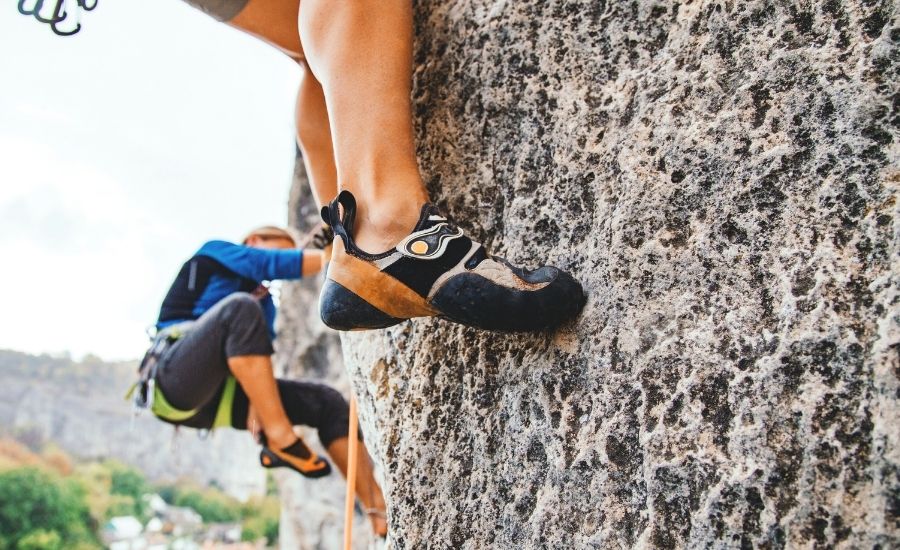
Having small climbing shoes gives climbers a lot more feeling and sensitivity in their feet. This allows them to actually feel the rock beneath their feet. While this may not be incredibly important for beginner climbers, it is for more experienced climbers.
Experienced climbers need to be able to climb hard routes that require very technical moves. A foot being off by just a few millimeters can cause a climber to slip and fall off the route.
Small shoes also scrunch the climber’s toes together. This scrunching of the toes allows climbers to put more weight on the front of their foot and use incredibly small footholds. If the shoes are too big, the climbers wouldn’t be able to focus their weight as well and would peel off the route.
In addition to increased sensitivity, tight climbing shoes allow climbers to perform moves that would not be as effective in bigger shoes. For example, climbers are able to heel hook holds in small shoes that would otherwise not be possible in larger shoes as their heels would slip in the shoe too much.
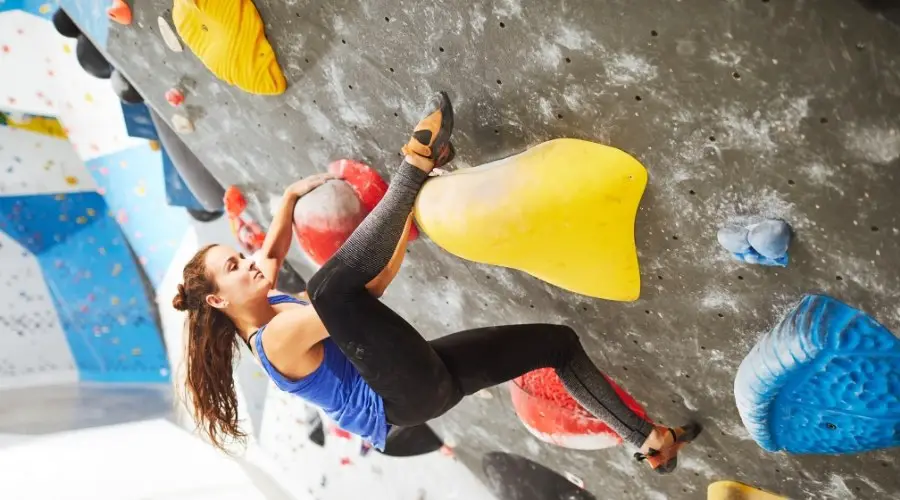
When climbing at advanced levels, it is very important to be able to trust your feet. Climbing is just as technical as it is physical. Not even the best climbers in the world can climb extremely technical routes with small foot holds in oversized climbing shoes.
Small climbing shoes are able to provide climbers with the ability to actually feel the rock and use incredibly small footholds. If football is a “game of inches” then climbing is a “game of millimeters” and advanced climbers need to take advantage of every single millimeter they can.
Disadvantages of Small Climbing Shoes
As I mentioned above, having small climbing shoes comes with drawbacks as well.
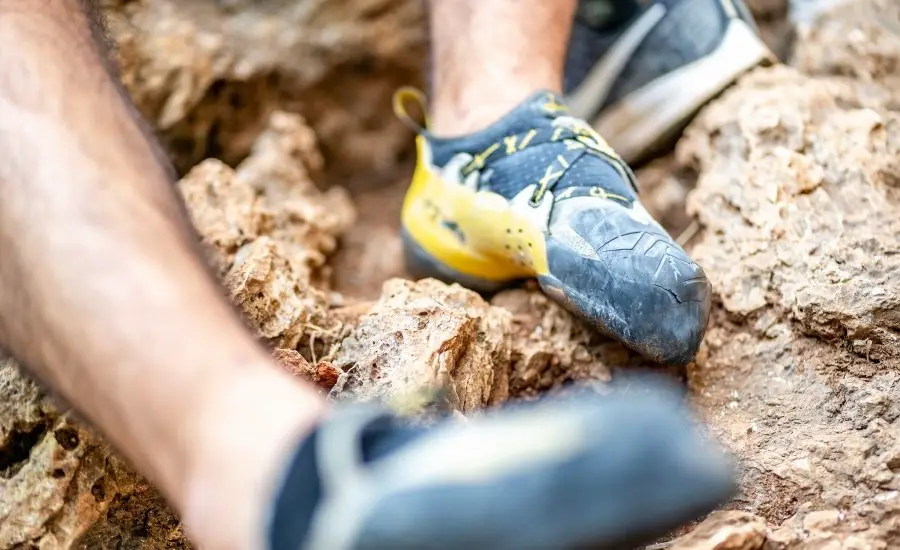
Small climbing shoes are uncomfortable and can cause climbers pain if they are too tight. Due to the discomfort and pain, climbers take off their shoes between attempts to air out their feet and give them a reprieve from the confines of their shoes.
Let’s be completely honest with each other here. Wearing painfully tight climbing shoes is basically a less extreme form of foot binding. You know, the Chinese custom of binding young girl’s feet to change their shape and size.
In an article written by Andrew Bisharat published on eveningsends.com linked here, he states that 15 years of forcing his feet into tight climbing shoes has actually shrunk his feet an entire size.
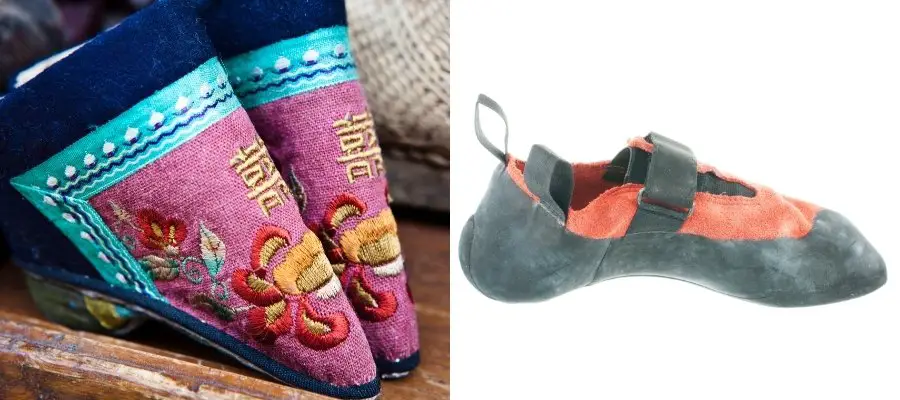
A study conducted by R.D. McHenry titled “Footwear in rock climbing: Current practice” is available online via sciencedirect.com. The study investigated how tight of shoes experienced climbers wear and evaluated if potential problems could arise from it.
Of the 56 climbers analyzed, 55 of them were found to be wearing “excessively tight footwear” (average shoe size reduction of 4 UK shoe sizes) and 91% of them reported foot pain during activity. The study went on to state that foot injury and deformity, including bunion formation, were common problems associated with the excessively tight climbing shoes.
It should be noted that wearing smaller shoes does not have to be as dangerous as the study found. Wearing shoes that fit correctly (without being excessively tight) will mitigate these potential injuries and deformations.
In addition to this, these injuries don’t just develop overnight. Going climbing with your friends once in moderately small shoes will not change the shape of your foot. These injuries/deformations require frequently shoving your feet into incredibly tight shoes for a long period of time.
Finding the Right Size Climbing Shoe For You
Now that you understand the benefits and drawbacks associated with wearing small climbing shoes, you may be wondering how tight of shoes you should wear.
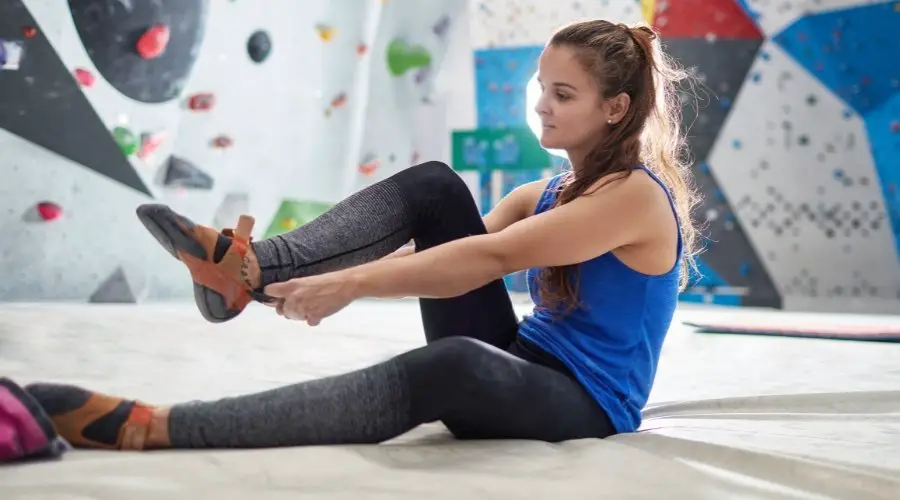
While I will not go into great detail here, it basically boils down to how important climbing is to you. If you are someone who is looking to take up climbing as a fun hobby and not take it incredibly seriously, you will not need excessively tight footwear.
That being said, very experienced climbers who are looking to milk every last drop of performance out of their shoes will most likely opt for painfully tight shoes.
For beginners, I recommend slightly sizing down from your normal shoe size but not doing anything too crazy. Just find a shoe size that is tight but not too uncomfortable. You will already be improving at an incredible pace and will not need to have extremely tight shoes to do so. Leave the foot binding to the professionals.
The Bottom Line
Wearing smaller shoes allows climbers to get increased sensitivity and grip on small footholds. This does not come without a cost however – the tighter the climbing shoes, the more uncomfortable they become. I believe climbers should find the right balance between comfort and performance in their shoes. For elite climbers, this typically involves sacrificing a tremendous amount of comfort to increase their climbing performance.
